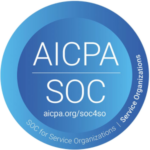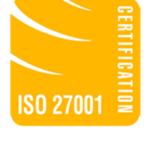A key pillar of any employee retention strategy is to develop and implement quality employee education benefits. Giving access to learning that inspires workers is a key way that employers can increase employee satisfaction and organizational success.
The key component of designing a learning benefit is the strategic approach to the catalogue. Programmes need to be adapted to the company’s strategic objectives, the learner profile, and the scope of the benefit.
A well-structured content catalogue infrastructure and taxonomy are essential to meet this goal. In this post, we are sharing some thoughts on the strategic steps to design an effective catalogue, along with best practices, and common challenges employers face in navigating content.
Steps to Design a Content Catalogue
Regardless of the number of employees and operational complexity of your organization, several steps should be taken to design a content catalogue:
Step 1: Understand your Strategic Objective
Education benefits can focus purely on retention – investing in workers as a way to retain workers and boost the employer brand – or they can serve an additional purpose to reskill workers for hard-to-fill positions within an organization. Often companies will invest in education benefits knowing that workers will eventually move out of the organization, for example from entry-level positions or part-time roles in the gig economy.
In these cases, the education benefit builds loyalty to attract more people to the jobs and extend their tenure, thereby saving the company significant recruitment resources. In other scenarios, companies are looking for people to evolve and grow in the company. For these companies, the catalogue should be weighted towards programmes that help train people for future jobs.
Step 2: Assess Learning Needs
The next step in designing a content catalogue is to assess the learning and development needs of the people using the education benefit. This involves identifying the skills that will appeal to your workers based on the job market, and open positions and industry trends that can influence future education demands.
Step 3: Catalogue Taxonomy
Once the learning needs are identified, decide on the structure and format of your catalogue. The structure is vital as it enhances discoverability and ensures learners can easily navigate through the content, find relevant materials, and engage in programmes that align with their goals and interests. A well-organized catalogue should be categorized intuitively to make it easier for learners to find what they need. Common categories include:
- Subject Area (finance, marketing, leadership, business development),
- Duration (hours, weeks, months, etc.),
- Weekly Time Commitment
- Delivery (face-to-face/hybrid/online and synchronous or asynchronous)
- Target Audience (entry, manager, senior leader, etc.),
- Skill Levels, and
- Language of Instruction
Step 4: Content Selection and Development
Selecting and maintaining the right content is crucial. This involves curating resources from learning partners who can provide relevant programmes at the right level for the targeted learners. All programmes need to be vetted for quality. It is vital to ensure the content is engaging, up-to-date, and aligned with your learning objectives.
Step 5: Implementation and Accessibility:
Implementing the content catalogue involves making it accessible to all users. The learning benefits portal needs to have the basic information allowing users to navigate the catalogue, apply for programmes, and access their courses. In addition, the company portal needs to be intuitive for managers to be able to track the usage.
Step 6: Monitoring Usage, Feedback, and Updating
The final step is to establish protocols to monitor access to the resources, usage of resources, completion of programmes, and feedback from users and managers. The content catalogue must be constantly refreshed and updated to ensure it remains relevant and continues to meet the evolving needs of your users and organization.
Some Best Practices for Consideration
Several things we recommend all organizations take into consideration when designing a content catalogue and content taxonomy include:
Designing for your user: Design your content catalogue and the content taxonomy with the end-user in mind. Ease of use, searchability, and personalized learning paths enhance the learning experience, learner engagement, and outcomes.
Use diverse learning formats: No two learners are exactly alike. For this reason, it is good to choose programmes that incorporate a variety of learning formats, including videos, articles, interactive courses, and webinars, to cater to different learning preferences and needs.
Build continuous feedback into all programmes: Establish a feedback loop with your employees to gather insights on the catalogue’s usability, and relevance, and to identify areas for improvement. This feedback is invaluable in making necessary adjustments and updates to your programmes. It will also be a vital element in your efforts to quantify the Return on Investment from your employee education programmes [1].
Common Challenges
1. Overcoming Content Overload:
One major challenge is avoiding content overload, which can overwhelm learners. A learning benefit is by definition a curated catalogue of select programmes to help build job-ready skills. it is not a vast content library of snippets of content. Carefully curate and organize the catalogue to ensure it remains focused and relevant to your audience’s needs. Some learning experts recommend not including more than fifteen elements at a time to reduce overload.[2]
2. Keep content updated:
Ensuring the content remains current and relevant in the face of rapidly changing industry standards and technologies is another challenge. Regular reviews and updates are necessary. It can be helpful to create a content review calendar to ensure all content is reviewed on a regular basis, in addition to the integration of new programmes identified through surveys and feedback.
3. Engaging Users:
Engaging users in continuous learning and development activities can be difficult. This not only includes creating compelling and relevant content that aligns with their career goals and interests but also deploying communications and promotions of the content catalog throughout the organization.
Conclusion
Designing a learning catalogue is a key aspect of a successful education benefit offering. It requires careful planning, execution, and ongoing management. By following the outlined steps, adhering to best practices, and being mindful of common challenges, employers can create a dynamic and effective learning environment. An engaging content catalogue not only supports the professional growth of employees but also contributes to the overall success of the organization.
[1] https://lynxeducate.com/maximizing-roi-the-strategic-advantage-from-creating-and-growing-employee-education-benefits
[2] https://lawsofux.com/millers-law/




